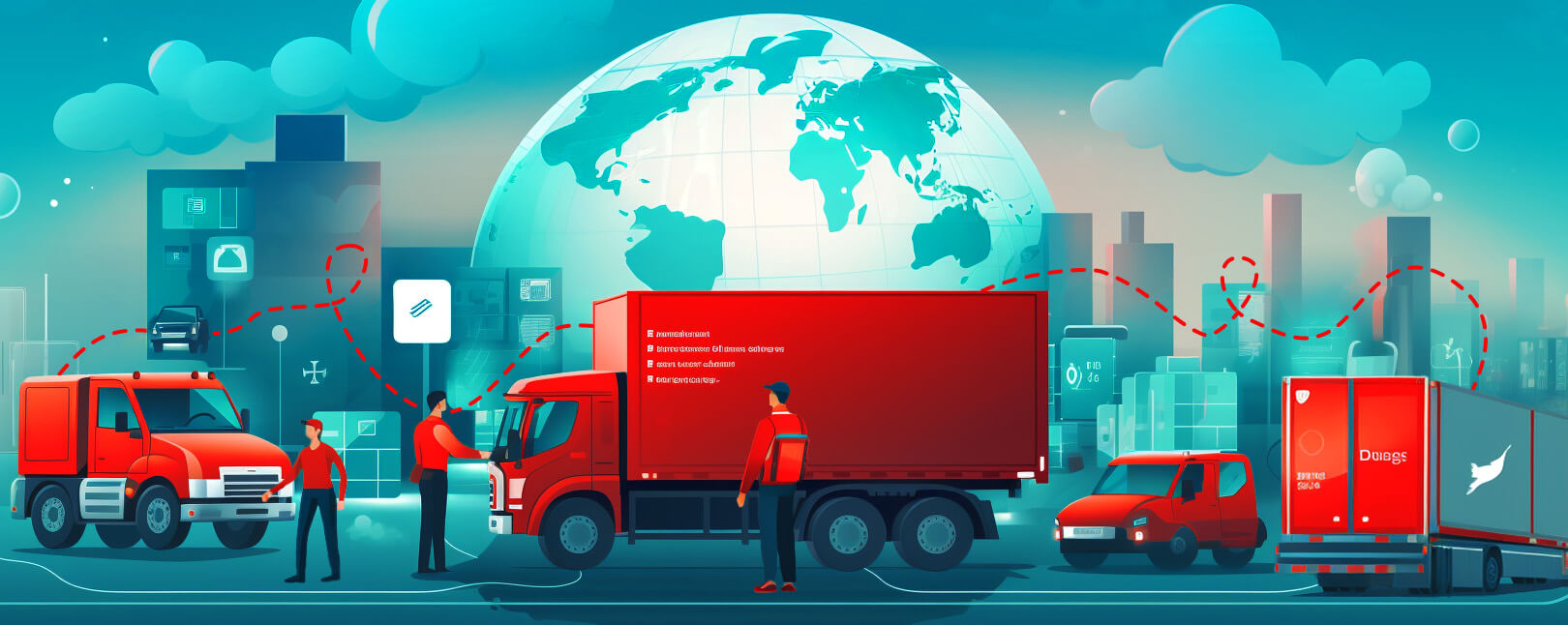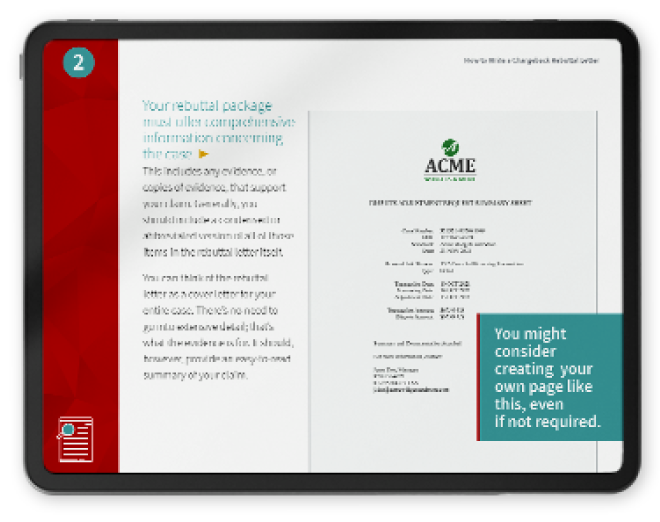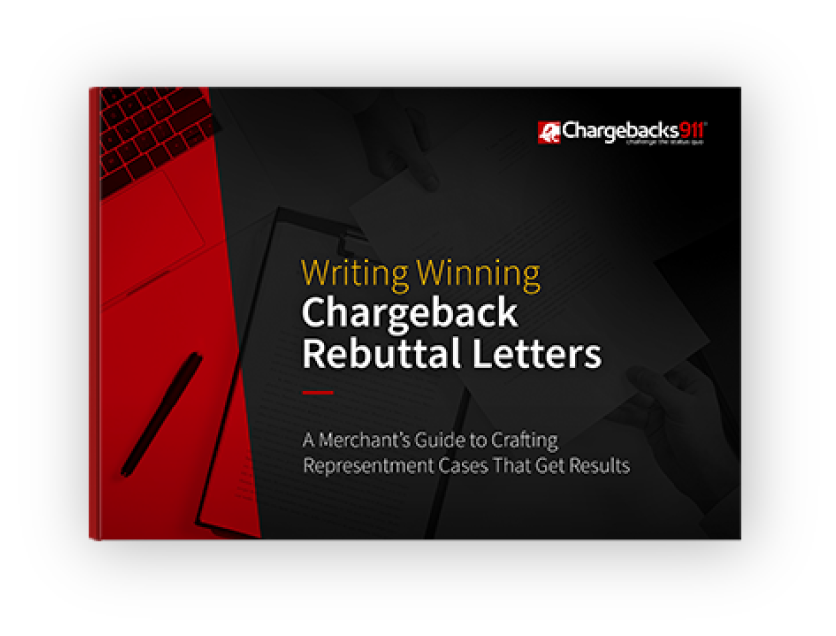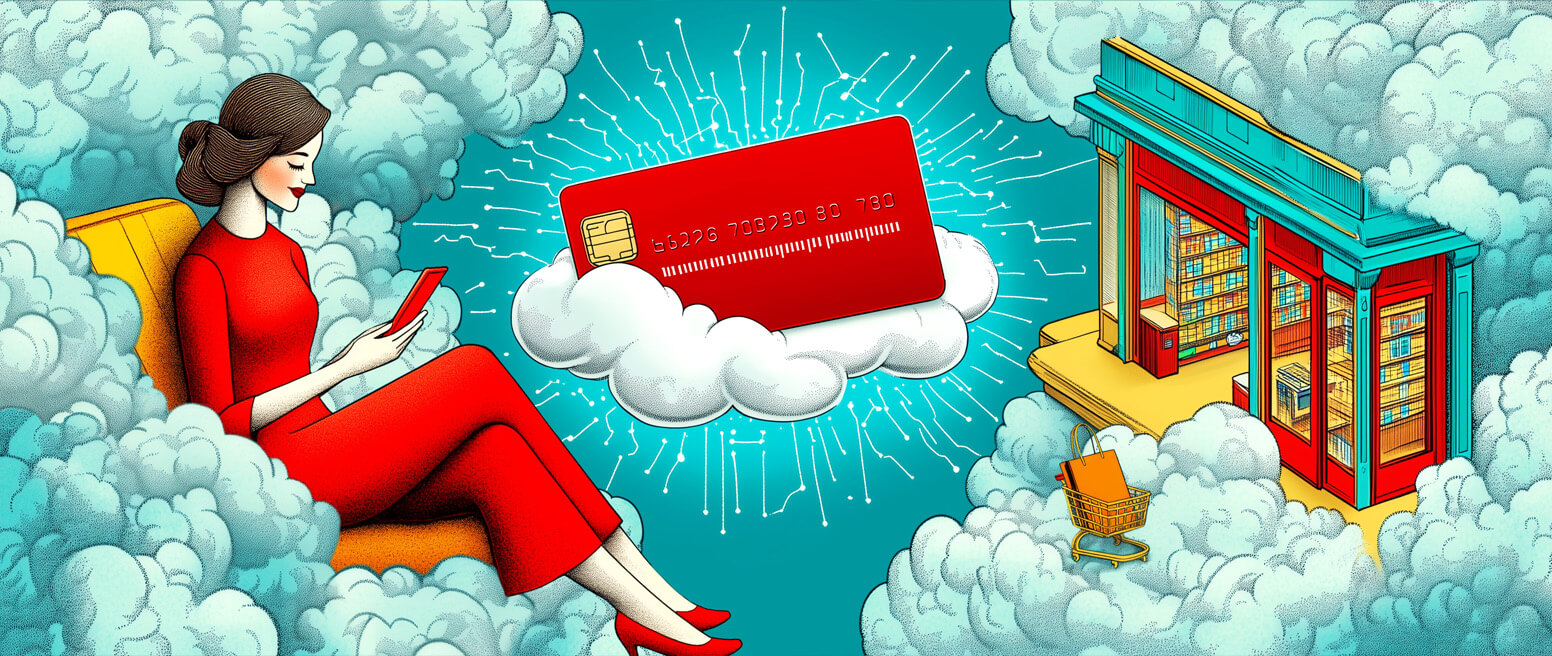Ensure Customer Satisfaction & Protect Your Revenue by Optimizing Order Fulfillment
Operating in the eCommerce space? If so, your online order fulfillment strategy is critical to your success and sustainability.
Online order fulfillment is more complicated than people tend to assume, though. You’re not just tossing a product into a box and dropping it in the mail. Without an efficient and well-organized process, you could be in serious trouble.
So, what does order fulfillment entail? What happens when it goes wrong, and what can you do to prevent missteps? Let’s find out.
Recommended reading
- Analyzing Consumer Buying Behavior in 11 Different Verticals - Chargebacks911
- Top 15 Customer Returns Reasons in 2025 & How to Avoid Them
- Online Shopping vs In-Store Shopping: the Future of Retail?
- They’re Here — Cyber Week 2024 Stats & Analysis!
- Card-Not-Present Transactions: Know the Risks & Rewards
- What is a Return Customer Rate? How to Calculate Your RCR
What is Order Fulfillment?
- Order Fulfillment
Order fulfillment describes the process of receiving and delivering goods to your customers. This can include inventory management, order processing, shipping, and return intake, among other operations.
[noun]/ôr • dər • fo͝ol • fil • mənt/
In simple terms, online order fulfillment means ensuring customers receive goods they purchase over the internet. Packing, labeling, and shipping are all part of the process. That said, fulfillment actually starts long before the sale and continues after merchandise delivery.
Maintaining inventory falls under the umbrella of order fulfillment, as does handling and restocking returns. When customers return merchandise, someone needs to log it back into your inventory to be resold.
The online order fulfillment chain is actually more of a circle, and fulfillment managers have to wear a lot of different hats.
Amazon, Walmart, and other gigantic online retailers with a lot of resources at their disposal have trained customers’ expectations. According to one report, 53% of shoppers say that delivery speed is an important consideration when it comes to online orders. Another study shows that 38% of shoppers who’ve had a bad delivery experience will never shop with that retailer again.
The Value of Fast & Effective Fulfillment
If you're looking to stand out from your competitors (and, let’s be honest, who isn’t?), easy and convenient order fulfillment could be the key.
When you get your order fulfillment processes right, you're going beyond simply meeting customers’ expectations. Instead, you’re seeking to exceed those standards. This will open the door to a bunch of fantastic benefits:
In short, getting order fulfillment right is more than a logistical win; it's a game-changer for your business. You'll see better customer relationships, a wider audience, and streamlined operations that let you focus on growing your business.

Steps in the Order Fulfillment Process
There is no single fulfillment strategy that will work for every business. However, some steps are common to nearly all processes:
As a bonus, a customer-centric return policy will also help prevent chargebacks.
Order Fulfillment Models: Is In-House or Outsource Better?
There are essentially three basic fulfillment models used by eCommerce merchants. You can opt for in-house fulfillment, fulfillment through a third party, or a dropshipping model.
In-House Fulfillment
Going the in-house route for order fulfillment means relying on your own team to handle every part of getting orders out the door, from storing to shipping.
In-house fulfillment can be a smart, wallet-friendly choice, particularly for smaller operations. But, you may want to adjust as you grow and start needing more space. It's all about growing and adapting to what your business needs.
| Pros | Cons |
| You retain control over every step of the process | Much bigger up-front investment (software, packing materials, warehouse, etc.) |
| Ability to use custom, branded packaging (some providers offer this, as well) | Time- and work-intensive for internal teams |
| Directly connected to the customer experience | Requires logistics expertise |
| Directly connected to the internal team | Fewer resources are available to grow other facets of the business |
Outsourced Fulfillment
Outsourcing fulfillment means passing the baton for tasks like shipping, inventory management, and returns to a third-party logistics provider. This is a go-to move for companies that are a bit tight on space, or which don't have enough hands on deck to fulfill orders.
The third-party team has their own warehouse, so you don't have to worry about finding room for all your stuff. It's a tidy solution if you’re not keen on pouring funds into your own storage space.
| Pros | Cons |
| Reduces typical order fulfillment time | Loss of direct control |
| Offload the burden of staffing onto the provider | Merchant is responsible for provider mistakes |
| Improved scalability; expansion is easier, even into foreign countries | Little, if any, ability to customize packaging |
| Often leads to lower cost-per-order | Cost-per-order savings may be eclipsed by provider add-on fees |
| Logistics expertise | Longer-term cost of outsourcing (as opposed to investing in your own system) |
Dropshipping
With drop-ship fulfillment, you don’t purchase inventory until after a customer places an order. After the sale, you send the order to the vendor or manufacturer, along with the customer’s name and address. This lets the vendor ship directly to the consumer.
The supplier is responsible for processing all orders and dispatching them directly to the customers. You only incur charges solely for the items sold.
| Pros | Cons |
| Requires little-to-no start-up capital | Lower-than-average margins |
| Less day-to-day hassle for you | Limited supply chain oversight/control |
| Minimal overhead and warehouse space necessary | Potential for unreliable vendors |
| Virtually unlimited number and type of product offerings | Greater number of players, which complicates customer service |
| Easily scalable | Increased risk of fraud, particularly with overseas vendors |
A Fourth Option: Hybrid Fulfillment
Each approach outlined above has its benefits and drawbacks. But, you can also adopt a hybrid approach, meaning that you outsource certain operations while keeping others in house.
With this approach, you might handle certain orders internally, like those involving custom products or items requiring assembly prior to shipment. You can then engage in dropshipping for standard, non-customized goods.
This strategy can work well if you handle some items that are less frequently bought than others, or if you have products that you can’t store onsite, like bulky or high-value items. The hybrid model is particularly advantageous if you’re seeking more flexibility, or are experiencing rapid growth.
| Pros | Con |
| More control over product shipment | Requires staffing oversight |
| Offload most acute staffing burdens onto an external provider | Merchant is responsible for provider mistakes |
| Improved scalability; expansion is easier, even into foreign countries | Most shipments won’t be customizable |
| Often leads to lower cost-per-order | Cost-per-order savings may be eclipsed by provider add-on fees |
| Logistics expertise | Hybridized order fulfillment and shipping costs might be uneven or complex |
Ultimately, you should seek to make order fulfillment as streamlined as possible for your customers and staff. This is why it’s important to choose the model that works best for your particular vertical, products, staffing needs, and shipping expectations.
What’s at Stake With Order Fulfillment
Consumers are accustomed to quick shipping. Many expect two-day, or even next-day delivery. This makes it necessary to fulfill orders as quickly as possible. If your order fulfillment isn't up to speed or consistent, it could harm your business and profitability.
The numbers paint a clear picture. Like we mentioned above, almost 40% of customers report say they may never shop with a specific retailer again after a bad fulfillment experience.
The variety of order fulfillment options you have can influence customer purchasing decisions. Buyers look for delivery choices that align with their specific needs. By providing a range of shipping speeds, from fast to moderate, you allow customers to make choices based on their budget and urgency.
Also, keep in mind that nearly 60% of consumers admit they've chosen one company over another simply because it offered more delivery choices. This underscores the importance of offering appealing delivery options to attract and retain customers.
Delivery mishaps, defective packaging, and shipping delays lead to 20-40% of all chargebacks issued. Customer satisfaction takes a hit when fulfillment issues come up, prompting chargeback requests and impacting your bottom line.
5 Common Roadblocks to Order Fulfillment
Implementing an effective order fulfillment process is no small feat. Businesses often grapple with complex issues like fluctuating demand, managing inventory, and strategizing warehouse logistics.
Five of the most-common deterrents include:
#1 | Demand Planning
Understanding your product demand is critical. Effective demand planning helps you steer clear of both overstocking and understocking, both of which can be harmful to your business. Employing demand shaping strategies, like targeted marketing and promotions, can also aid in stimulating demand and better aligning your stock levels with customer needs.
#2 | Inventory Management
Balancing your inventory is a delicate art. Running low on stock can turn customers away from your business and towards your competitors. Mastering inventory management ensures you don't lose out on sales due to insufficient stock.
#3 | Logistics Planning
The shipping process is more than just a final step; it's a crucial part of your customer's experience. Ensuring that your shipping methods are quick, efficient, and careful is imperative. Mistakes in this area can result in late, damaged, or lost deliveries, harming your reputation and sales.
#4 | Supply Chain Execution
Even with well-laid plans, unexpected spikes in demand can lead to inventory shortages. Being quick to replenish your stock is vital. This often involves having strong relationships with manufacturers who can provide a fast response to your restocking needs.
#5 | Return Management
Processing returns, inspecting returned goods for quality, and managing reverse logistics can all impact customer satisfaction and operational costs. Mismanaged returns are one of the leading causes of chargebacks. So, you really need to stick the landing here.
Remember: the transaction isn’t complete until the customer receives their purchase, regardless of your target market. Excelling in order fulfillment is fundamental for completing sales, scaling your business, and ensuring customer satisfaction. It should be a top priority in every transaction!
5 Best Practices for Order Fulfillment
Perfecting your order fulfillment process is a surefire way to captivate your customers and stay ahead in the market race. Here are five key practices to consider to fine-tune your fulfillment strategies:
#1 | Tailor Your Fulfillment Model
It's crucial to choose a fulfillment model that aligns with your business needs. The model should comfortably handle your order volumes, reach your customers wherever they are, and mesh well with your sales channels. Especially if you deal in custom or made-to-order products, your fulfillment process needs to handle these unique requirements smoothly, avoiding unnecessary delays.
#2 | Make Data-Driven Decisions
Use technology that supports real-time data tracking for order fulfillment. This offers clear visibility into your inventory, aiding in more precise predictions of demand. Relying on this data for your purchasing and production decisions helps you stay in tune with demand and maintain optimal inventory levels.
#3 | Prioritize Clear Communication
Enhanced supply chain visibility allows you to set realistic delivery expectations with your customers. Transparency is key in every situation. However, it’s especially important when it comes to your returns processes.
#4 | Embrace Advanced Automation
Try warehouse automation to boost efficiency and accuracy in order fulfillment. AI solutions adapt in real time, cutting down unnecessary movement and upping your picking efficiency. These tools can help guide your warehouse staff through tasks, letting them work more efficiently and make fewer mistakes.
#5 | Stay Agile & Adaptable
Agility is essential. Be ready to adapt your fulfillment strategies in response to emerging trends, customer feedback, or shifts in demand. This flexibility can help you respond quickly to new challenges and opportunities, keeping your business dynamic and customer-focused.
Order Fulfillment is a “Make-or-Break” Question
Handled correctly, a good fulfillment experience can solidify your customers’ loyalties and keep them coming back again and again. However, a bad fulfillment experience may mean losing a customer for life. It can also trigger a customer dispute, which means even more lost revenue.
That said, optimizing order fulfillment can be a complicated, time-consuming process, and mistakes will still happen from time to time. This is why it’s important to know that managing threats like payment disputes resulting from fulfillment missteps requires a multilayered approach.
Chargebacks911® has a wealth of experience-based knowledge and expertise in providing cost-effective prevention and risk mitigation strategies. Contact us today to learn more.
FAQs
Does order fulfillment include shipping?
Yes, order fulfillment includes shipping. It encompasses the entire process from receiving and processing orders to the final delivery of products to customers.
How does order fulfillment work?
Order fulfillment involves the entire process of receiving, processing, packing, and shipping orders to customers. It starts from the moment an order is placed and ends with the successful delivery of the product.
What is included in order fulfillment?
Order fulfillment includes the entire sequence of steps from receiving and processing customer orders to packaging, shipping, and delivering the products. It also encompasses inventory management and handling returns.














